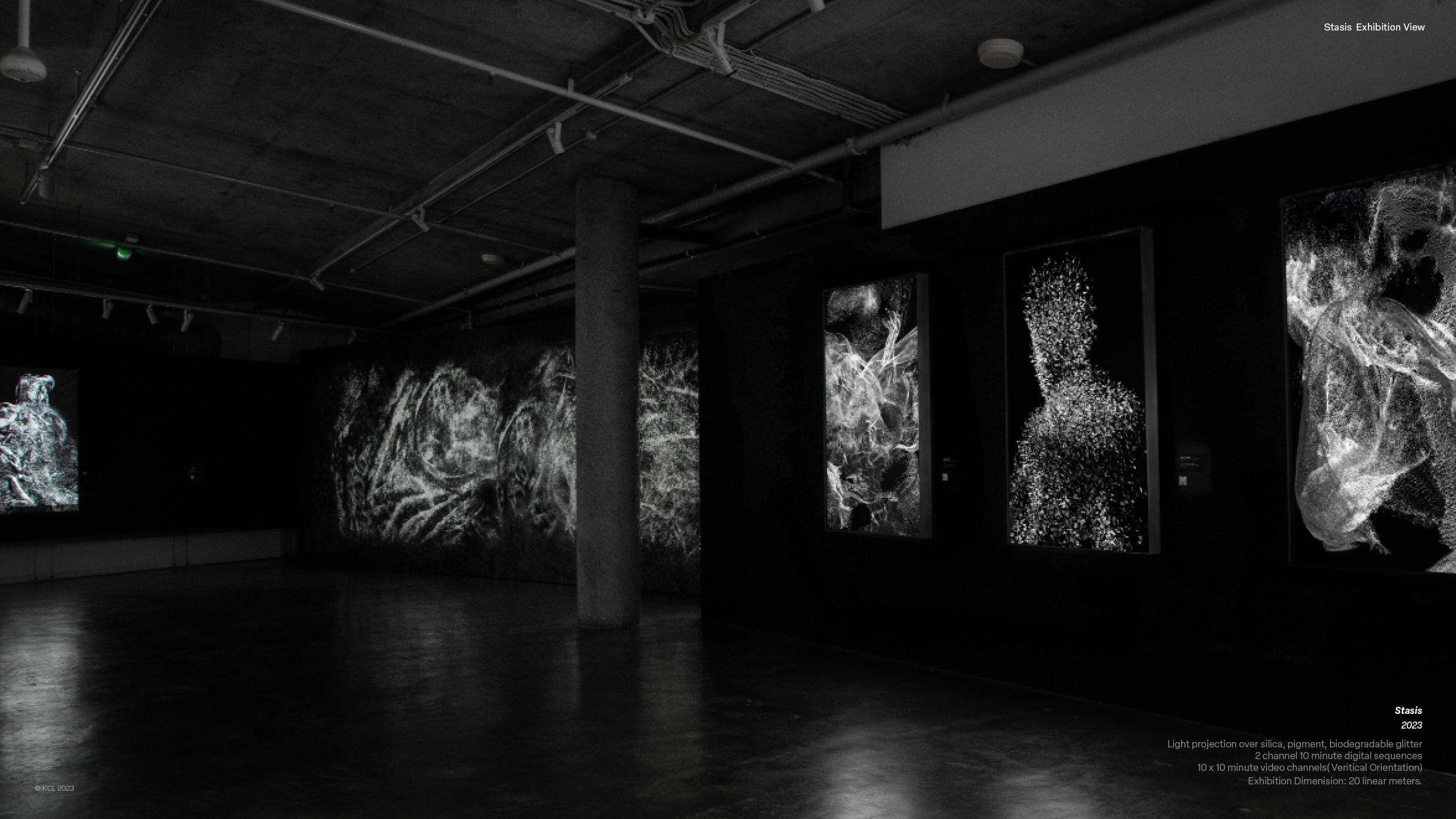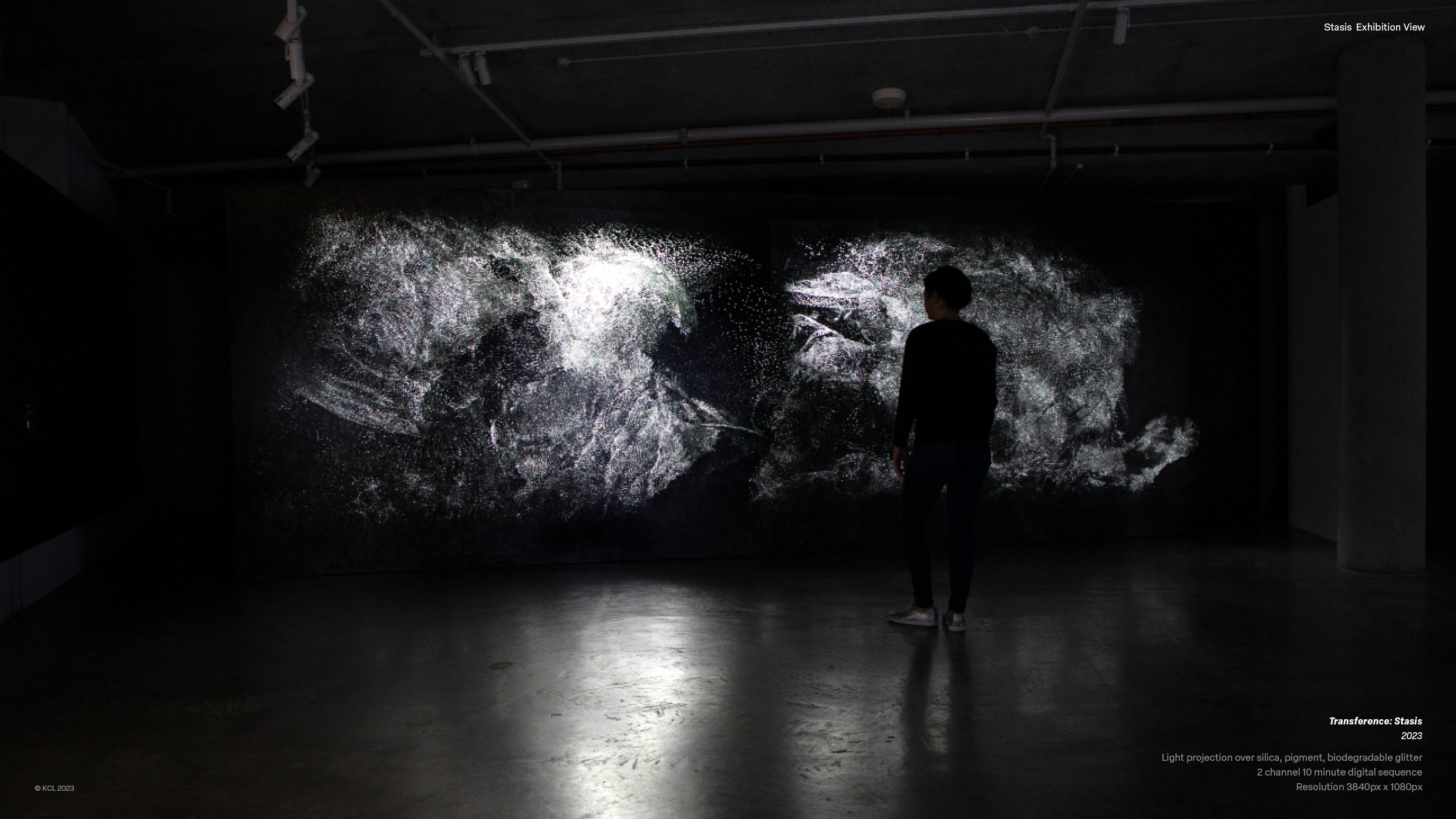
Kenneth Lambert’s experimental practice embraces disintegrated matter and the inexorable expressions that reflect the human condition. Lambert’s conceptual approach captures the contemporary zeitgeist by transposing themes found in science to illuminate current social issues and rising anxieties of our time. At the intersection of technology and the humanities, the artist’s investigations have led to works utilising particle acceleration to relate to climate change and data translation technology to investigate digital autonomy. Lambert’s cross-disciplinary practice encompasses digital, film, expanded drawing, painting and installation.
His work has been featured in award shows in Australia and the USA. In 2019 he was named Grand Prix Prize Winner of the One-Self competition, which resulted in his work Data Blue being featured at the Scope Art Fair in Miami. In Australia, he has been a finalist in the Churchie Emerging Artist Prize, The Alice Prize, Dobell Drawing Prize, Incinerator Gallery Prize – Art for Social Change, The Fisher’s Ghost Prize, Kilgour Art Prize, Lumen Art Prize and Mosan Art Prize.
Humanising Data: The Stasis Project’s Approach to Data Portraiture in Generative Art
The Stasis project, blending technology, art, and human narrative, is notable in generative art. It uses data portraiture to transcend traditional art forms, offering a digital perspective on refugee and asylum seekers’ experiences. This project dissects the complexities of this innovative approach, analysing how Stasis translates personal stories into abstract data, fostering empathy and understanding. It also probes the ethical aspects and the role of such art in influencing social and humanitarian discourse.
This initiative, originating in Australia, merges art and technology, altering public views on refugees and asylum seekers. Stasis converts interview data into abstract visuals, thus empathetically presenting often statistical personal experiences. The paper introduces the project, discussing its impact on contemporary art and public debates about displacement. It highlights Stasis’s use of generative art to narrate universally resonant, personal stories.

